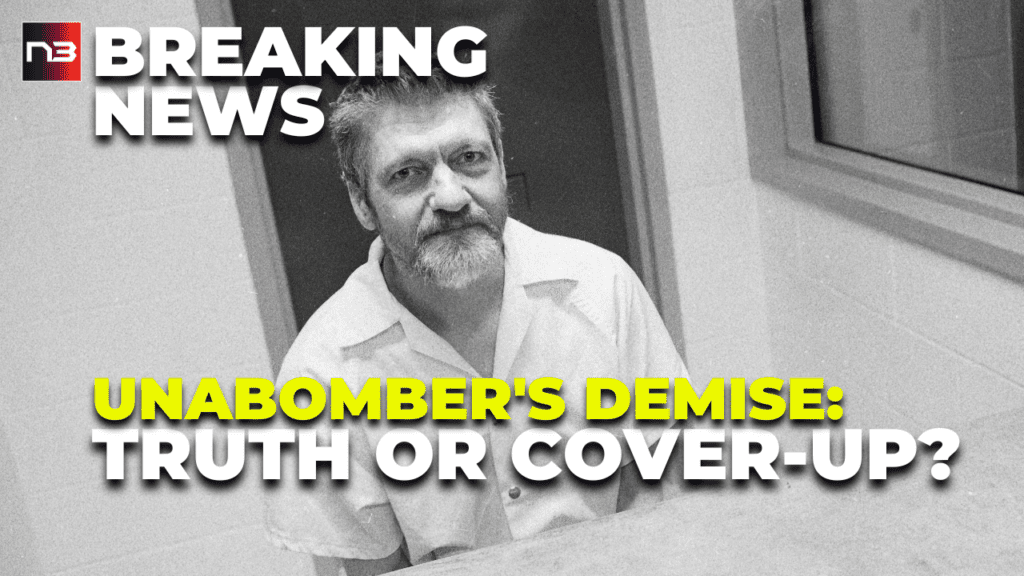In a chilling turn of events, Ted Kaczynski, famously known as the Unabomber, has been found dead in his solitary confinement. The man who unleashed terror through a wave of bombings targeting scientists has left the nation grappling with unanswered questions. Was justice finally served, or are we witnessing a conspiracy unfolding? As the dark details surrounding Kaczynski’s final hours come to light, we delve deep into the secrets that haunted him, unearthing a legacy that continues to send shockwaves through the fabric of our society.
The Unabomber’s death marks the end of a harrowing chapter in American history, one that left a trail of destruction and lives forever altered. At 81 years old, Kaczynski met his demise in his prison cell, shrouded in the mystery that had followed him for decades. While authorities claim his death to be the result of natural causes, skepticism lingers, and conspiracy theories abound.
The man once described as the most prolific bomber in American history had crafted 16 deadly devices that claimed the lives of three innocent individuals. His reign of terror began in the late 1970s, targeting universities, airlines, and even corporate executives. The attacks were meticulously planned, as Kaczynski sought to sow fear and chaos.
After years of evading capture, the Unabomber was finally apprehended in 1996 when his own brother recognized his writing style in the manifesto published by The Washington Post. The FBI arrested Kaczynski at his remote cabin in Montana, where they uncovered a cache of bomb-making materials and journals documenting his twisted ideology.
The Unabomber’s bombings not only took lives but also left a trail of destruction that injured two dozen victims. His targets were carefully selected, focusing on individuals associated with technological advancements that he believed were detrimental to humanity. By striking at the heart of scientific progress, Kaczynski aimed to disrupt and dismantle what he perceived as a dangerous future.
The Unabomber, Ted Kaczynski, will forever be remembered as one of the most notorious domestic terrorists in American history. His reign of terror spanned over two decades, leaving a trail of destruction and fear across the nation. Let us delve into the chilling details of each of his heinous crimes, shedding light on the disturbing mind behind the bombings.
Kaczynski’s first known attack occurred in 1978 when he targeted Northwestern University. A bomb disguised as a package was sent to Professor Buckley Crist, severely injuring him when it exploded upon opening. This marked the beginning of a series of meticulously planned attacks that would terrorize the country for years to come.
In 1980, Kaczynski struck again, this time targeting American Airlines. A bomb hidden in the cargo hold of Flight 444 exploded mid-flight, causing the plane to make an emergency landing. Miraculously, there were no casualties in this incident, but it sent shockwaves through the airline industry and raised concerns about the vulnerability of air travel.
Over the following years, Kaczynski’s targets included prestigious universities such as the University of California, Berkeley, and Yale University. Professors and researchers were his primary victims, with bombs disguised as packages delivered to their offices. One such attack occurred in 1985, when a bomb mailed to Professor James V. McConnell at the University of Michigan severely injured him, leaving him blind in one eye.
Kaczynski’s most devastating attack took place in 1995. He targeted a timber industry executive, Gilbert Murray, sending him a package bomb that exploded upon opening. Tragically, Murray lost his life in the blast, highlighting the extreme lengths to which Kaczynski was willing to go to promote his anti-technology agenda.
The Unabomber’s carefully planned bombings didn’t discriminate based on gender or age. In 1993, a bomb sent to Charles Epstein, a geneticist at the University of California, San Francisco, injured his wife, injuring her hands and face. The collateral damage caused by Kaczynski’s actions amplified the terror and uncertainty surrounding his reign of violence.
The Unabomber’s reign of terror finally came to an end in 1996, thanks to the vigilance of his own brother, David Kaczynski. Recognizing Ted’s distinctive writing style in the Unabomber manifesto published by The Washington Post, David contacted authorities, leading to the arrest of his brother in his remote Montana cabin.
In total, Kaczynski’s bombings claimed the lives of three innocent individuals and left two dozen others injured physically and emotionally. His calculated acts of violence struck fear into the hearts of Americans and left a lasting impact on the victims’ families and the nation as a whole.
As news of the Unabomber’s death spreads, reactions are mixed. Some argue that justice has finally been served, while others question the circumstances surrounding his demise. Given the controversial nature of Kaczynski’s actions, it is no surprise that conspiracy theories are emerging. Speculations range from government cover-ups to hidden accomplices who may have played a role in his death.
However, it is important to note that Kaczynski’s life was marked by isolation and a radical ideology that rejected the very fabric of modern society. His extensive writings exposed a mind consumed by a warped worldview, making it unlikely that he had any substantial connections outside his own deviant thoughts.
While his death brings a sense of closure to the victims’ families and the nation at large, the Unabomber’s legacy remains a stark reminder of the depths to which an individual’s fanaticism can descend. It serves as a testament to the unwavering resilience of a society that refuses to be crippled by terror.
As the Unabomber’s story reaches its final chapter, we are left with a mixture of relief, intrigue, and unanswered questions. The death of this notorious figure who brought terror to the lives of many leaves behind a legacy that will forever be etched in American history. We can only hope that his demise provides solace to those who suffered and instills a renewed determination to prevent the rise of similar forces in our society. The Unabomber’s reign of terror may be over, but the impact he made will forever echo through time.



